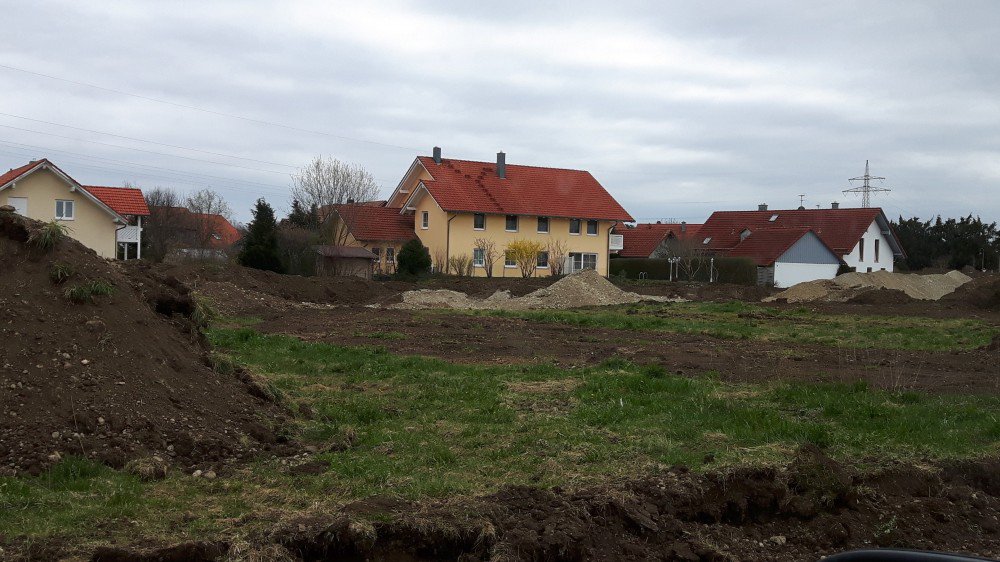Poroton vertically perforated bricks have now overtaken classic bricks in solid construction. Since they are said to have particularly good energy properties, Poroton bricks and brick systems are the building material of choice, especially for the construction of low-energy houses. Read what is behind the name Poroton and learn about the advantages of the vertically perforated bricks.
the essentials in brief
- Air-filled cavities in the Poroton bricks provide very good thermal insulation.
- Poroton bricks are mainly used in the construction of low-energy and passive houses.
- In addition to the good noise and fire protection properties, builders benefit from the favorable price of the building material.
What are Poroton bricks and how are they made?
“Poroton” is actually a brand name composed of the words “poroser” and “clay”. Porous masonry bricks and brick systems have been produced and sold under this name since the 1960s. During production, burnout materials are added to the clay. Untreated sawdust, cellulose produced during paper manufacturing, recycled polystyrene or coal dust are used. During the firing process, these burnout materials evaporate, leaving voids filled with air: the brick is “porosified”. Today, the trademark “Poroton” belongs to the German Poroton Association. Under a license agreement, association members can use the patent for the manufacture of these special brick products and place the building materials on the market under this trademark. (Poroton is now a very popular building material in solid construction: find out here all the advantages and disadvantages of prefabricated house or solid construction).
Low weight, high stability, good thermal insulation
Due to the porosity of the brick material, the vertically perforated bricks are much lighter overall than, for example, the classic bricks – with the same stability. The air pockets inside the vertically perforated bricks are also the key to their most outstanding property: good thermal insulation. This property is further enhanced by the additional filling of the vertically perforated bricks with perlite and other insulating materials. Therefore, bricks made of Poroton are in great demand, especially in the construction of low-energy to passive houses. For example, according to the German Poroton Association and various manufacturers of bricks and brick systems, no artificial insulation layers, such as ETICS (external thermal insulation composite systems), should be necessary for a solid house in monolithic (single-shell) construction. However, critics doubt this and counter that additional insulation is still required for a solid house made of Poroton. This, in turn, would increase the risk of moisture and mold infestation.

Pleasant living climate due to the combination of insulation and storage
Poroton vertically perforated bricks act like a natural air conditioner. Like all bricks, they are also able to retain heat in the house and keep the cold outside due to their insulating properties. Conversely, in the summer they leave the high temperatures outside and keep the temperature in the house constantly cool. This creates a pleasant living environment. Unlike other building materials, such as wood, which are said to have the same properties, this effect is further enhanced by the high density of Poroton bricks. ( Proper ventilation is particularly important for a healthy living climate – we have summarized what you should pay attention to in our article).
Good marks for noise and fire protection
The building material Poroton is considered to be an ideal noise barrier. Most of the requirements for protection against traffic or industrial noise should be met by Poroton houses even without additional noise protection measures. However, the prerequisite for this is that the windows of the house were designed accordingly.
Like all bricks, Poroton bricks are fire resistant and non-combustible. This property they owe to the production process, during which the building material is baked in the oven for many hours at about 1000 degrees. Thus, the vertically perforated bricks meet the highest requirements for fire protection. In the event of fire, they also remain stable and do not emit toxic gases.
Cheaper construction with Poroton vertically perforated bricks
Builders who opt for a solid house in monolithic (single-shell) construction using vertically perforated bricks are said by the association and manufacturers to build particularly favorably. (Unexpected costs can drive up the price: Learn in our article how to Cost traps when building a house avoid.) Even after completion of the house – during living and maintenance – houses made of vertically perforated bricks are said to offer great savings potential. During construction, Poroton bricks require less effort to meet the requirements of the EnEV (Energy Saving Ordinance) to fulfill. In addition, the processing of the vertically perforated brick is relatively uncomplicated. The finished house requires less heating due to good thermal insulation. In addition, because the solid exterior walls are less susceptible to damage, homeowners save on maintenance and repair costs, according to the association and manufacturers.




